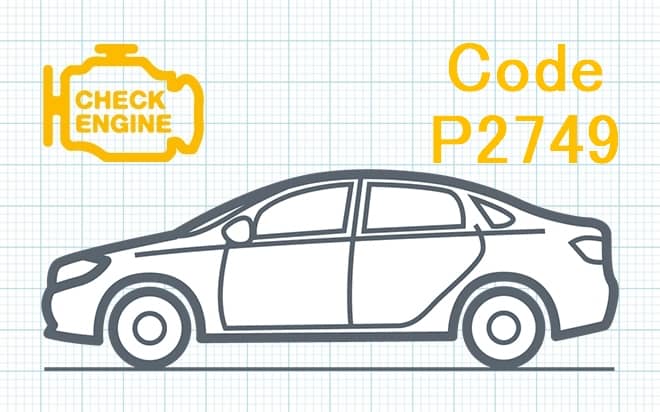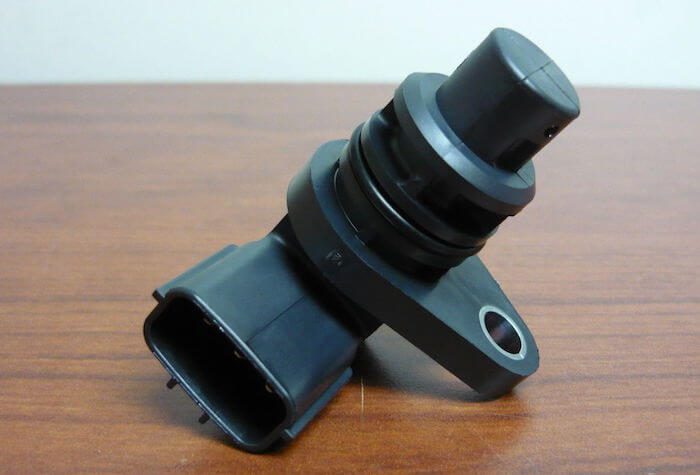
P2749 Intermediate Shaft Speed Sensor C Circuit
Content
- P2749 Intermediate Shaft Speed Sensor C Circuit
- OBD-II DTC Datasheet
- What does this mean?
- What is the severity of this DTC?
- What are some of the symptoms of the code?
- What are some of the common causes for the code?
- What are some steps to troubleshoot the P2749?
- Related DTC discussions
- Need more help with the P2749 code?
P2749 Intermediate Shaft Speed Sensor C Circuit
OBD-II DTC Datasheet
Intermediate Shaft Speed Sensor C Circuit
What does this mean?
This is a generic diagnostic trouble code (DTC) and is commonly applied to OBD-II vehicles with automatic transmissions. This may include but is not limited to Mazda, Toyota, Chrysler, Ford, VW, Dodge, Jeep, Mercedes, Lexus, Chevrolet, etc.
Although general, the exact repair steps may vary depending on the model year, make, model, and transmission configuration.
The countershaft, also known as the countershaft, helps distribute the rotational force from the input drive to the output shaft inside the transmission. The intermediate shaft speed depends on which gear you are in. In a manual transmission, this is dictated by the gear selector, so there is no need to control the intermediate shaft speed.
On the other hand, in an automatic transmission, if you are in "D" drive mode, the gear you are in is determined by the TCM (transmission control module) using multiple sensor inputs that contribute to smooth and efficient gear changes. One of the sensors included here is the intermediate shaft speed sensor. The TCM needs this specific input to help identify and adjust hydraulic pressure, shift points, and patterns. Experience in diagnosing other types of speed sensors (for example: VSS (vehicle speed sensor), ESS (engine speed sensor), etc.) will help you with this, since most speed sensors are similar in design.
The ECM (Engine Control Module) in conjunction with the TCM (Transmission Control Module) may activate P2749 and related codes (P2750, P2751, P2752) when they monitor for a malfunction in the intermediate shaft speed sensor or circuits. Occasionally, when a sensor fails, the TCM uses other speed sensors in the transmission and determines a “backup” hydraulic pressure to keep the automatic transmission operational, but this can vary significantly between manufacturers.
Code P2749 Intermediate Shaft C Speed Sensor Circuit is set by the ECM (Engine Control Module) and / or TCM (Transmission Control Module) when he / they monitors a general malfunction in the C speed sensor or its circuit. Consult your specific vehicle repair manual to determine which part of the "C" chain is appropriate for your specific application.
NOTE. Make a note of any codes active in other systems if multiple warning lights are on (eg traction control, ABS, VSC, etc.).
Transmission speed sensor photo: 
What is the severity of this DTC?
I would say this error is moderately severe. As mentioned earlier, your automatic transmission may be working just fine. However, it can also be indicative if there are one or more more serious problems. The best strategy is to diagnose any transmission problem as soon as possible.
What are some of the symptoms of the code?
Symptoms of a P2749 trouble code may include:
- Hard gear shifting
- Numerous dashboard indicators illuminate
- Poor handling
- Unstable engine speed
What are some of the common causes for the code?
Reasons for this P2749 engine code may include:
- Defective or damaged intermediate shaft speed sensor
- Electrical fault in the wires between the speed sensor and the modules used
- Internal problem with ECM and / or TCM
- Other related sensors / solenoids are damaged or defective (for example: input shaft speed sensor, output shaft sensor, shift solenoid, etc.)
- Dirty or low automatic transmission fluid (ATF)
What are some steps to troubleshoot the P2749?
Basic step # 1
If you research this code, I will assume that you have already checked the transmission fluid level. If not, start with this. Make sure the fluid is clean and properly filled. Once the fluid is all right, you need to locate the countershaft speed sensor. Often these sensors are installed directly on the transmission housing.
You can even access the sensor from under the hood, this could involve removing another component like the air cleaner and box, various brackets, wires, etc. to gain access. Make sure the sensor and associated connector are in good condition and fully connected.
TIP: Burnt ATF (automatic transmission fluid) that smells like new fluid is needed, so don't be afraid to perform a full transmission service with all new filters, gaskets, and fluid.
Basic step # 2
The easily accessible speed sensor should be removed and cleaned. It costs next to nothing, and if you find that the sensor is excessively dirty after removal, you can literally wash away your problems. Use brake cleaner and a rag to keep the sensor clean. Dirt and / or shavings can affect the readings of the sensors, so make sure your sensor is clean!
NOTE. Any sign of friction on the sensor may indicate insufficient distance between the reactor ring and the sensor. Most likely the sensor is faulty and now hits the ring. If the replacement sensor still does not clean the ring, refer to manufacturing procedures to adjust the sensor / reactor gap.
Basic step # 3
Check the sensor and its circuit. To test the sensor itself, you will need to use a multimeter and the manufacturer's specific specifications and measure various electrical values between the sensor's pins. One good trick is to run these tests from the same wires, but on the appropriate pins on the ECM or TCM connector. This will check the integrity of the seat belt being used as well as the sensor.
Related DTC discussions
- There are currently no related topics in our forums. Post a new topic on the forum now.
Need more help with the P2749 code?
If you still need help with DTC P2749, post a question in the comments below this article.
NOTE. This information is provided for informational purposes only. It is not intended to be used as a repair recommendation and we are not responsible for any action you take on any vehicle. All information on this site is protected by copyright.